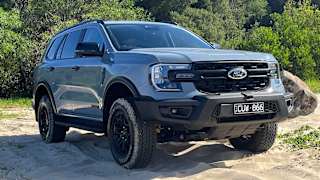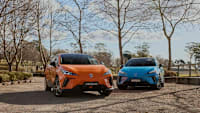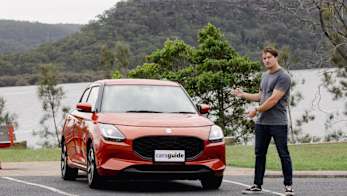One of the less examined consequences of the COVID pandemic could be an increasing reliance on personal transport. Public transport (including flying) has the dreaded unknown of exactly who sat in that seat before you. Along with who drank from that cup before you, who used that arm-rest before you and who opened that overhead bin before you. But your own car? No, you know for sure who else was there immediately before you were. And the answer is probably either nobody or, at the worst, a member of your immediate family. That’s peace of mind, right there. And who knows, maybe you’ll rediscover the fun of a road trip.
Of course, if the theory holds water, then a lot more people are going to be driving to places they once flew or took a train to. And, if you’re a resident of the nation’s two biggest cities, that’s going to mean doing the Sydney-Melbourne shuffle. And that’s inevitable, because even if a small percentage of folks who once flew this route take to their cars, that will still involve a large number of travellers. Because depending on what source you use, the pre-Covid Sydney-Melbourne flight was either the second or third busiest on the planet in terms of flight and passenger numbers.
But isn’t the Sydney to Melbourne drive boring? Maybe. If you‘re not paying attention. And sure, if you’re just blazing down the freeway without stopping, it’s not a driver’s road by any means. But for anybody with a modicum of general interest, the journey potentially takes you through some regions with rich historical content, thriving contemporary movements and plain old gorgeous countryside. And depending on your schedule, there are two main routes to consider, turning a there-and-back transport stage into a round trip if you have the time and the inclination.
For the purposes of this, let’s assume we’re travelling north, doing the Melbourne to Sydney drive. If drive time is tight, the absolute quickest route is via the Hume Highway which runs north out of Melbourne briefly, then turns north-east until about Yass where it then heads almost due east for about 100km to Goulburn before turning north-east again and entering Sydney’s metro area from the south. Dubbed the M31, this freeway is now traffic-light free from the outskirts of both cities and every town, village and hamlet along the was has now been by-passed, making the 877km journey possible in under nine hours (thanks to the 110km/h speed limit, apart from a small section near Albury where it’s 80km/h) if you only stop for petrol and coffee once.
In the old days, when the route was still a highway and not a freeway, the Hume passed through dozens of towns and villages, some small, some large and all of them with plenty of things to see. If you have the time these days, heading down the off-ramp and through these places gives a great look at mid-century (and earlier) Australia.
Melbourne to Seymour (115km: One hour, 20 minutes)
The first town of note north from Melbourne is Seymour, located about 115km due north. A major rail town (it’s on the Sydney-Melbourne line) Seymour now is a pretty relaxed place with its share of wineries and gourmet food outlets, attracting the Melbourne hordes during grazing season. The old bridge that was once the main Hume link still stands and before that, Seymour was the main crossing place of the Goulburn River in horse-and-cart times.
Seymour to Wangaratta (139km: One hour 29 minutes)
You can then either jump back on the Hume Freeway or continue on bits of the old Hume Highway and back roads to Euroa. Now a thriving area for horse studs, Euroa is set in natural rolling hills and is also famous as the location of the bank Ned Kelly and his gang robbed in 1878. Benalla is the next major town heading north on the Hume and is big enough to be able to help with repairs and spare parts. There are plenty of places to eat and the town has strong links to the art community. Prior to European settlement, the area was a major corrobboree site of the Taungurong people. Wangaratta is next and became a major centre when gold was discovered in nearby Beechworth in 1852. It’s also about 15km from Glenrowan, where the Kelly Gang made its last, armour-clad stand in 1880. There’s a historic walk through Glenrowan marking significant spots in the shoot-out.
Wangaratta to Albury/Wodonga (76km: One hour)
Albury is in NSW, Wodonga is in Victoria, but effectively this is one huge inland city. There’s plenty to see and do and lots of workshops and spare parts should you need them. This area is also a good jumping-off point for historic gold mining towns and Lake Hume and the Murray River are big drawcards.
Albury to Gundagai (180km: One hour, 50 minutes)
Over the border, the scenery becomes a little hillier and you’ll skirt the Snowy Mountains to the east, separating you from the coast. Gundagai is a sleepy little place these days, dominated by a vast bridge over the river-flats of the Murrumbidgee River and the famous dog on the tuckerbox tourist trap just north of town. The fabulously art deco Niagara Café in Gundagai’s main street (opened in 1902) is also a landmark for travellers of this route.
Gundagai to Goulburn (180km: One hour, 50 minutes)
About half way between these towns lies Yass which is also worth a look. Once a terrible place to stop with semi-trailers rattling through the narrow main street 24 hours a day, Yass is now a much quieter place and produces some of the finest Merino wool in the world. Goulburn is, in many ways, a bigger version of Yass, including the notoriously cold winters. The NSW Highway Patrol has a base at Goulburn where its officers are trained. You have been warned.
Goulburn to Bowral (86km: 55 minutes)
Bowral is a little farther off the Freeway than most other towns listed here, but it’s worth the short drive to take in some fantastic architecture. Plenty of Sydney money has dribbled south to Bowral and nearby places, so there’s good food and accommodation with a wide range of budgets. Antique shoppers will love this part of the trip.
Bowral to Campbelltown (65km: 45 minutes)
As far as most travellers are concerned, Sydney starts at Campbelltown. Of course, as Sydney sprawls ever-farther west and south, the Campbelltown region is right in the thick of Sydney, really, although it’s still surrounded to the east by various national parks. Beyond that, though, it’s genuinely part of Sydney proper with all that implies.
Campbelltown to Sydney (60km: 55 minutes)
You can either stay on the freeway (which becomes a toll-road) all the way to the Sydney CBD or jump off the motorway and use the old Hume Highway which takes much longer. That said, either route can be a nightmare if Sydney’s traffic is living up to its reputation at the time.
And back again…
Okay, now let’s head back the other way with more time up our sleeve and tackle the Sydney to Melbourne coastal drive. The distance from Sydney to Melbourne going this way is a lot farther at 1032km and will take a lot longer, but it’s also a more involving drive if only because the roads are much smaller. In fact, the route is made up in many places of what started as farm access roads as this coastal route was never a major one between cities. And the term `coastal route’ is a bit misleading because you don’t actually zoom along with view of the Pacific Ocean on your left shoulder for very much of it at all. But there are some gorgeous towns along the way and you can’t avoid most of them, because the road runs right through them, rather than by-passing them like the Hume Freeway does.
Sydney to Wollongong (90km: One hour, 25 minutes)
Take the M1 south out of central Sydney and you’ll pass though the Heathcote National Park. But if you have the time, a much nicer drive is to turn left just south of Loftus and travel through the middle of the Royal National Park which will pop you out, back onto the Pacific Motorway at Waterfall. The other advantage of going through Ryal National Park is that it leads you on to the Grand Pacific Drive, a 140km section that starts in the park and takes in the stunning Sea Cliff Bridge, an elevated roadway that actually puts you out over the ocean in places.
Wollongong to Nowra (80km: One hour, five minutes)
Leaving Wollongong, you’ll pass Lake Illawarra to your left and then head back towards the coast, seeing the ocean again just north of Kiama with its famous blow-hole. There’s some serious beautiful dairy country in these parts and, if there’s time, stop at the local museum at Berry for some local history. Eventually, you’ll cross the Shoalhaven River just north of Nowra.
Nowra to Batemans Bay (118km: One hour, 40 minutes)
From Nowra, the road heads inland a little from Jervis Bay (now a real foodie destination) before continuing down and hitting the coast again at Ulladulla. While the whole of the coast south of Sydney and north of the NSW-Victorian border is regarded as the South Coast, Batemans Bay is right in the thick of the region and is a popular holiday destination, so there’s plenty of accommodation, good food and stunning beaches.
Batemans Bay to Merimbula (175km: Two hours, 15 minutes)
The first hour south from Batemans Bay is through some lovely coastal scenery before the second half of the journey on the Pacific Highway takes you a little inland and though more lush dairy country. Don’t rush this part of the trip and considering sticking to the coast all the way on the secondary, local roads which will still bring you out right at Merimbula Lake.
Merimbula to Lakes Entrance (267km: Three hours, 10 minutes)
Eden is the first town of any real size you’ll hit after Merimbula and it’s also the last place to stock up on whatever supplies you need (apart from fuel) as the next big town is Lakes Entrance a full three hours away. You’ll cross into Victoria after about an hour, but there’s no town to celebrate the fact. If time permits, a turn to the left just over the border will take you down to Mallacoota, a normally sleepy little town with great fishing. This leg of the journey is the most remote section of the whole journey with towering temperate rainforests, farm country and lots of open road. The Lakes Entrance Fishermens Co-op is your reward at the end.
Lakes Entrance to Bairnsdale (40km: 40 minutes)
Although this is a short stretch, average speeds are very low as the road isn’t great and there’s actually not a whole lot to see. A diversion to the south to check out Metung on the protected waters on the lake and river system is a good idea, and lunch at the Metung Pub, right on the water is never a bad idea.
Bairnsdale to Sale (68km: 50 minutes)
From here, you’re in Gippsland proper and headed for the LaTrobe Valley. The landscape gets a lot flatter and is quite swampy in places and, to be honest, the best of the journey from a scenery perspective is now behind you. Sale is a decent sized town with everything you need and is also home to East Sale RAAF home-base of the Roulettes, the nation’s military aerobatics display team.
Sale to Melbourne (215km: Two hours, 35 minutes)
The run from Sale into Melbourne is largely achieved on the M1 freeway although you do still pass through a few towns that are yet to be by-passed. About an hour form the Melbourne metro area, you’ll pass the Yarra Ranges National Park on your right which marks the beginning of some serious wilderness areas north of the freeway. The M1 drops you into the metropolitan area on the very eastern outskirts of Melbourne, still a good 40km from the CBD and an hour-and-a-half even on the freeway if the traffic is not being friendly.
The alternatives
The XPT train runs between Sydney and Melbourne daily (COVID permitting) and can be quite a cheap alternative, particularly if you’re travelling on a concession fare. But you don’t get any say in where you’ll stop or what route you’ll take and the journey can take up to 11 hours. There’s also the very good chance you’ll be transferred from a train to a bus for part of the journey as seemingly never-ending track maintenance is carried out.
Flying is the other option, but the airlines are in a state of chaos right now with Covid concerns and closed borders. Flights between the two capitals used to take place every 20 minutes with a range of fares depending on when you booked and who you flew with. However, post-Covid, all bets are likely to be off and it’s anybody’s guess how much a flight will cost in coming months. Which means, dust off the car, have it serviced and rediscover how Australians used to travel.




.jpg)


.jpg)

.jpg)



.jpg)

.jpg)




.jpg)

.jpg)


.jpg)